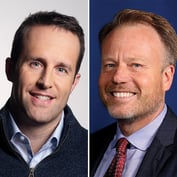In the wake of the market meltdown that devastated many a retiree or near-retiree’s portfolio, what is the role of the advisor? In a two-day Retirement Income Symposium in Chicago on October 19-20, hosted by the editors of Investment Advisor, Research, Boomer Market Advisor, and WealthManagerWeb.com, with Jackson National Life as the major sponsor, speakers from the investment, insurance, and advisor community–topped off with a thought-provoking valedictory in the person of Pershing Advisor Solutions’ Mark Tibergien–shone light on the issue, and suggested ways that product manufacturers and advisors could work together to solve the retirement income puzzle.
Dan Houston, who heads the retirement and investor services division of Principal Financial Group, which offers retirement plan services to 4.7 million participants, keynoted the opening session by presenting some “brutal facts” on the reality of Americans and retirement: while a baby boomer is retiring “every 19 seconds,” Houston noted that 40% of American workers report they had less than $10,000 in savings and investments; while Americans are “undersaving and retiring too soon,” nevertheless surveys have found that workers believe that they can draw down 6% per year in retirement, though the actual number is closer to 4%; and that the savings rate in this country, while much improved since 2008′s market cataclysm, needs to double, to somewhere between 11% and 15%, to support a comfortable retirement. However, Houston said that the “next few months will be a great opportunity for advisors,” as investors try to determine how long it will take to rebuild their nest eggs, and noting that “even those who have saved for retirement need help converting their lump sums into an income stream.” There are some signs of hope, Houston pointed out, such as the 11% of workers who as of the third quarter of 2009 reported increasing their contributions to their 401(k)s, and that for those investors in their 40s and 50s, 2008 was a “loud wakeup call after a big hangover.”








 December 01, 2009 at 02:00 AM
December 01, 2009 at 02:00 AM










